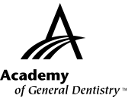|
Exercise No. 333
Subject Code: 250
Operative (Restorative) Dentistry
The 15 questions for this exercise are based on the article, “Analysis of total microbiota in dentin after mechanical or papain-based chemomechanical caries removal.” This exercise was developed by Gustav Gates, DDS, MAGD, in association with the General Dentistry Self-Instruction committee.
|
Reading the article and successfully completing this exercise will enable you to:
- understand the difference between conventional and chemomechanical caries removal methods;
- understand the components of chemomechanical caries removal materials; and
- review the physiological process of the carious dentinal lesion.
|

